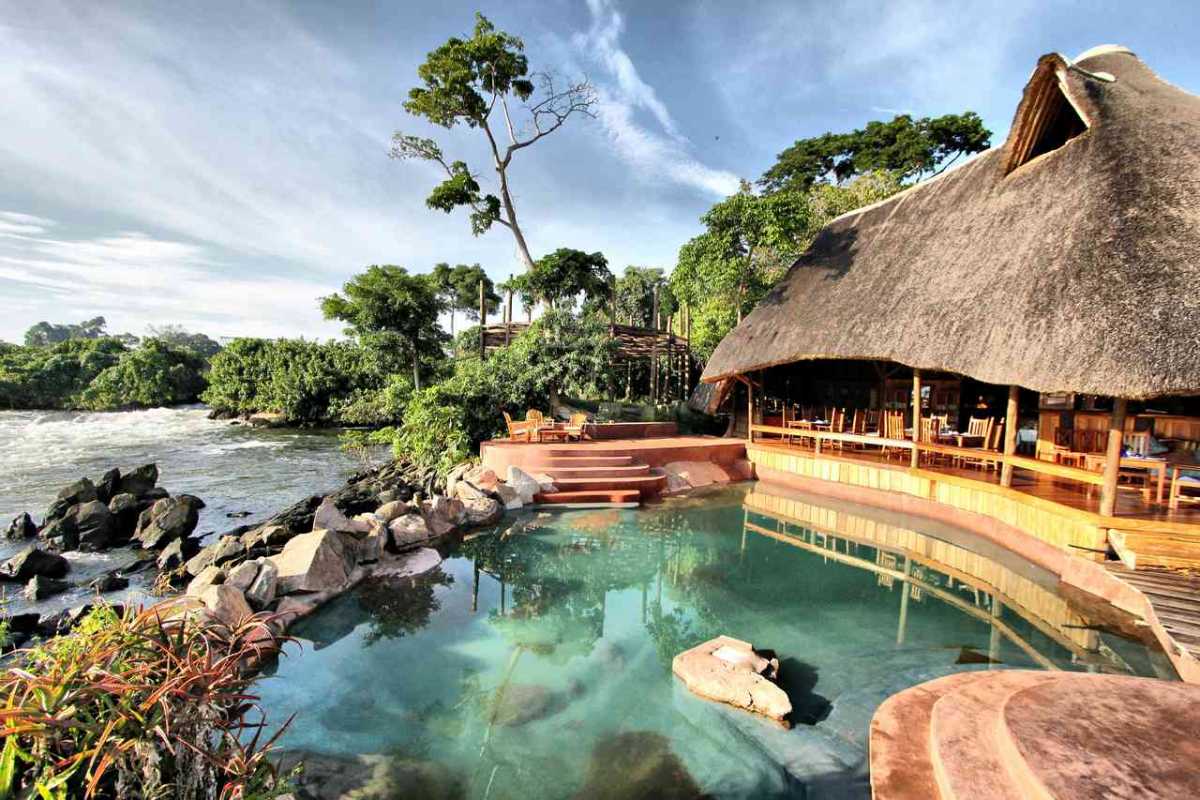Uganda: Uganda Tourism Profile
2015/01/29

Uganda’s tourism sector is the fastest growing sectors in Uganda and grew by 21% in 2012. It generated US$85.3 million (UGX 2,132.6 billion) and is forecast to rise by 2.8% in 2013. In 2012, Uganda was voted as number one tourist destination by Lonely Planet. Tourism sector has been recognised by government as priority area for the economic development of the country.
The government has embarked on the process of creating a conducive environment for attracting investments into the sector. The government affirmative actions include the following:
- A dedicated Ministry of Tourism
- A government funded Uganda Tourism Board
- A government funded Uganda Wildlife Authority
- A dedicated Ministry of Water and Environment
- Partnerships with the private sector and donor community in mobilizing resources for investment in tourism supporting infrastructure
A lot of private sector investment has been mobilized for hotels, transport, apartments and conference facilities. A lot more is required in transport, airport improvement, capacity building, accommodation facilities in the national parks and creating other wildlife protected areas.
Regulatory Framework
The tourism sector legal framework is under the Act of 2008 as summarised below;
Uganda Tourism Act of 2008
The Act was passed to consolidate and streamline the law relating to tourism in order to provide for licensing, regulating and controlling of the tourism sector and to give effect to the implementation of the tourism policy of Government and to reconstitute the Uganda Tourist Board to make it private sector driven.
The regulatory framework includes the following key players;
Ministry of Tourism, Wildlife and Antiquities
The ministry is responsible for the formulation and implementation of policies, strategies, plans and programs that promote tourism, wildlife and cultural heritage conservation for socio-economic development and transformation of the country.
Uganda Tourism Board
Uganda Tourism Board has served the country in ensuring the success and growth of tourism in Uganda. The Board is responsible for promoting and popularising Uganda as a viable holiday destination both locally and internationally in order to:
- Increase the contribution of tourism earnings and GDP
- Improve Uganda’s competitiveness as an international tourism destination
- Increase Uganda’s share of Africa’s and World tourism market.
Uganda wildlife authority (UWA)
UWA is responsible for management and conservation of wildlife in Uganda, both in and outside the wildlife protected areas (PAs) that is National Parks, Wildlife Reserves and Wildlife Sanctuaries.UWA also promotes public participation in wildlife management using mechanism such as wildlife use rights as a means of eradicating poverty, through community conservation programs and promoting wildlife as a form of land use.
Department of Tourism Development
This department plays a role in policy determination, formulation and implementation, coordination and development of strategies for sustainable tourism development in the country.
Bwindi and Mgahinga Conservation Trust (BMCT)
This was established in March 1995 under the Uganda Trustees Act mandated with ensuring that the biodiversity and ecosystem of Mgahinga Gorilla National Park (MGNP) and Bwindi Impenetrable National Park (BINP) are conserved in harmony with development needs of the surrounding communities.
Chimpanzee Sanctuary and Wildlife Conservation Trust (CSWCT)
This was established as a combined national and international initiative and a globally recognized collaborative conservation effort geared towards developing and implementing a long term strategy for conservation of chimpanzees and their habitats.
The Rhino Fund Uganda
This was established as a public private partnership initiative with the overall aim of re-introducing Rhinos in Uganda. The Fund manages the Rhino Sanctuary which is undertaking breeding for reintroduction of Rhinos into the wild and currently there are 13 Rhinos at the sanctuary
Pearl of Africa
Uganda is a Pearl of Africa in terms of flora and fauna. It is a home of many species of animals including the African Buffalo, hippos, Elephants, lions, Rhino, gorillas, leopards and others. It has many species of birds, butterflies and moths. It has mountains, swamps, rivers, lakes forests, jungles, hot springs, savannah, Crater lakes, fertile and semi-arid land and it is the most bio-diverse countries in Africa. The River Nile starts its long journey to the Mediterranean Sea from Uganda.
Uganda is endowed with over 50 different types of minerals and it ranks among the countries in Africa with the biggest number of minerals. The country’s minerals resources include; Copper, Cobalt, Tin, Phosphates, Vermiculite, Diamond, Gold, Petroleum, Chronite, Magnetite, Uranium, Iron ore among others.
Performance of the sector
Uganda’s tourism sector is the fastest growing sectors in Uganda and grew by 21% in 2012. It generated UGX 2,132.6 billion (3.7%) and is forecast to rise by 2.8% in 2013. Uganda was recently voted as number one tourist destination for 2012 by Lonely Planet which made the country to be recognized in the region.
Characteristics of the sector
- Domestic tourism has increased by 50% over the last ten years.
- Tourism contributes about 24% of total foreign exchange earnings of the country.
- Uganda is served by Entebbe International Airport and a total of 45 aerodromes spread across the country.
- The demand and use of international air transport services has steady increased
Current situation in the tourism sector
- Uganda has developed Tourism Act that favours private sector participation in tourism development.
- The tourism policy emphasizes natural resource conservation and management for sustainable development.
- There have been tremendous investments in the development of visitor handling facilities, tourist products and hotels.
- The management and protection of wild animals rests with Uganda Wildlife Authority.
- The country has a number of educational institutions that train various personnel to man the tourism sector.
- There is deliberate effort to creare awareness of the tourism potential through tourism marketing
Accommodation
It is estimated that Uganda has a total of approximately 1300 registered establishments offering accommodation. These establishments have approximately 20,000 rooms with close to 30,000 beds to canter for tourists. Of these 1300 establishments, 600 are in tourism centric districts of Kampala, Entebbe and Jinja.
Market for beach resorts and forest lodges
The facilities around these places target the midrange tourists looking for luxurious and un-crowded facilities, but at lower prices. The facilties are ideal for both residents and non-residents who want to enjoy nature in quiet natural settings. This market has grown by 50% over the last 10 years and is likely to double over the next ten years. The guests to these places include:
- Indigenous affluent Ugandans seeking to escape from daily routine of work, home and urban life.
- Local foreign residents working with non government organizations, foreign missions and business.
- Local newly married couples seeking beautiful places to spend honeymoon time.
- Foreign tourists from Europe, USA and Asia seeking to have the sun, sea, sand and entertainment.
- Corporate organizations seeking for quiet places for retreats.
- Business people with differing interests.
Market for domestic air transport
Uganda is currently a major destination for business travellers, international conferences and meetings in the East African region and this is predicted to increase the demand for faster and more convenient domestic air transport in Uganda.
People and Culture
Traditional customs and lifestyles are still very alive in Uganda which adds spice to the visitors’ experience. Ugandans are open and friendly to visitors.
Winston Churchill
After experiencing the above, no wonder Sir Winston Churchill called ‘Uganda ‘Pearl of Africa’.
Tourist Arrivals
International tourist arrivals to Uganda have more than quadrupled over the past decade that is from 205,000 in 2001 to 945,000 in 2010 and currently the international arrivals is 1.035 billion in 2012.
Government investment into Tourism Sector
The Uganda Government launched its privatization program in 1993, under which most government owned enterprises were privatized including all hotels and tourist facilities. In line with this strategy, the Government of Uganda divested its interests in all hotel and related facilities and currently, 90% of all accommodation facilities in Uganda are owned by the private sector.
Investment opportunities in Uganda’s tourism sector
- Construction of a Wild life/Forest Lodge.
- Establishment of White Sand Resort Beaches
- Domestic Air Transport.
-
Development of various modern facilties to support the sector
- Establishment of Tourism and Hospitality Training Institute
Challenges in Tourism sector
Despite being one of the fastest growing sectors in Uganda with an annual growth rate of 21% and a total contribution of $1.7 billion in 2012 to the GDP, the tourism sector is facing the following challenges.
- Lack of a national carrier resulting in unfavourable flight connections to source markets.
- Inadequate funding to the sector
- Poaching of wildlife
- Lack of adequate number of trained and experienced people to manage the sector
- Perceived insecurity in Uganda.
- The global threat of terrorism.
- Population pressure on the protected areas.
- Insufficient marketing
- Uganda News
-
- BOTSWANA: Africa: USA-Africa - No Policy? Bad Policy? or Both?
- BOTSWANA: Africa: U.S. State Department To Get Experienced Diplomat in Key Africa Post
- UGANDA: Ugandan Govt Starts Verifying International Academy Teachers
- BOTSWANA: Africa’s economic growth in 2016 was driven by East Africa
- BOTSWANA: Africa property offers rich pickings for the brave
- BOTSWANA: Bill Gates sees US likely to maintain aid levels for Africa
- Trending Articles
-
- HUNGARY: Putin, Hungarian PM discuss new nuclear power plant
- CHINA: Xi Jinping opens BRICS Summit in Xiamen, asks members to shelve differences
- CHINA: Xiamen BRICS summit in China
- CHINA: The Mixed Fortunes of the BRICS Countries, in 5 Facts
- CHINA: BRICS Must Trust Diplomacy To Resolve Issues, Says China's Xi Jinping
- BOTSWANA: Africa: U.S. State Department To Get Experienced Diplomat in Key Africa Post








